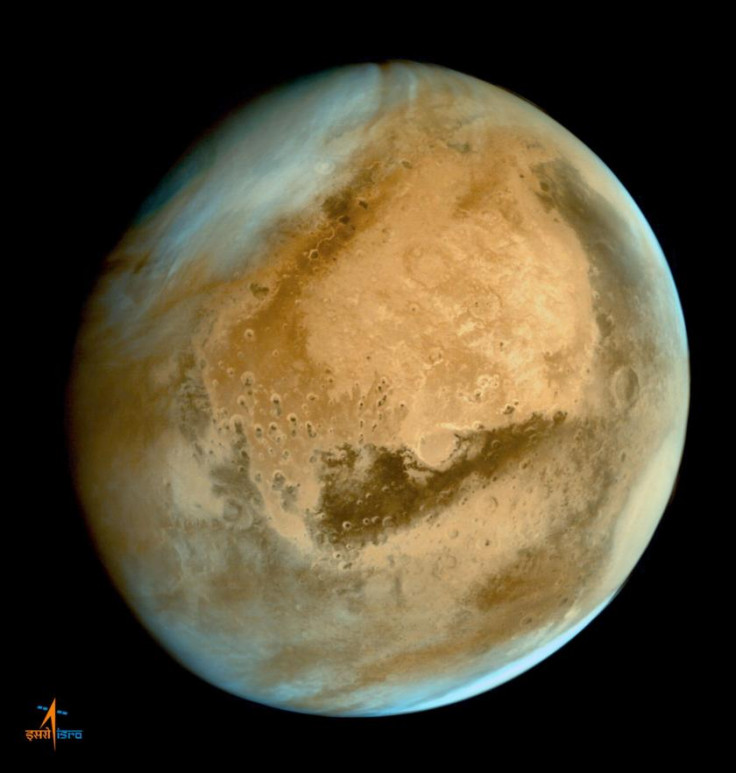Mars Dust Storm Captured by India's Mars Orbiter while Evidence of Past Glaciers Uncovered by Study

The full image of Mars shown in the latest of a series of photos from India's Mars Orbiter Mission (MOM) has generated much interest within the country and in planetary circles.
While those at home chose to see an image of India on the Martian surface, at the Planetary Society the image has been welcomed for its superior detail, coming years after Hubble clicked one 11 years ago.
"A data set unlike any generated before by any other mission, the MOM's pictures should inform public perception of Mars for years to come', says the report.
The MOM image shows a dust storm in the northern hemisphere. In the picture the viewer is looking down at Meridiani Planum where Mars rover Opportunity is exploring the terrain. The Curiosity rover is near the Gale Crater which is also currently storm-free.
The MOM probe will study the atmosphere searching for signs of methane, and also look at surface composition using the thermal imaging spectrometer. A photometer and an analyser will study the atmospheric composition.

The renewed interest in Mars will get another surge following a study that has identified mineralogical evidence of past glaciers in the planet's 2,000-mile-long chasm Valles Marineris.
Presence of past glaciers
Researchers had identified features in the canyon believed to be carved by glaciers that once flowed through. A joint team has seen signatures of a layer of mixed sulfate minerals halfway up the three-mile-high cliffs at the western end of the canyon system.
Having much in common with Earth, the red planet has captured human imagination since early last century. Hints of the presence of water channels, an atmosphere which was blown away, and distinct evidence of microbial life on meteorites believed to have originated from Mars have egged on the search for life.
While European Space Agency's Mars Express recorded enhanced levels of methane, indicating the presence of organic forms of life, subsequent confirmations have been missing. That is where Nasa's Maven, equipped with eight instruments to probe the solar wind and the Martian atmosphere, and India's MOM will clear the picture.

© Copyright IBTimes 2025. All rights reserved.





















